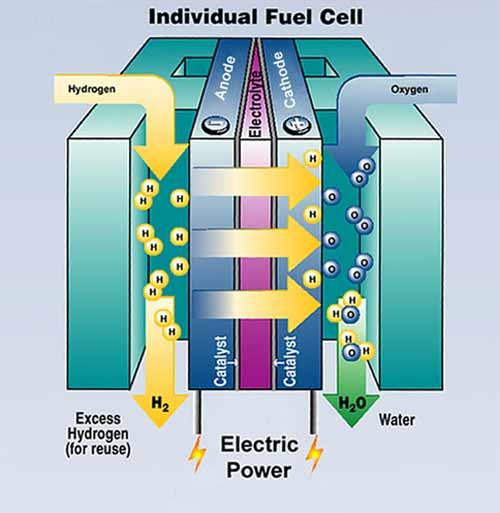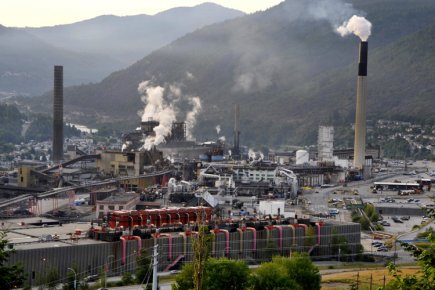1. Industrial Mathematics
I am interested in modelling real problems from industry, primarily
using partial differential equations (PDE) and then employing analytical
and computational approaches to gain insight into their solution.
My past and current projects in this area include:
-
Industrial problem-solving workshops (IPSWs): Also called
study groups, these are workshops of approximately 4-5 days in
length during which teams of academic problem-solvers attack
problems of direct relevance to companies or other non-academic
organizations. The International Study Groups
Website has more information about these events and collects
information about various industrial problem-solving workshops held
around the world. I have been involved in a number of these
workshops in the past, during which I've investigated land mine detection using the radon
transform [C2], water flow in pipe
networks [C3], and disease detection
[C10].

-
Hydrogen fuel cells:
My main interests are in modelling and simulation of reactant
transport in fuel cell electrodes
[J9],
[J10],
[J17],
[J18],
[C6],
[C7],
[C9],
and developing approximate analytical solutions for the underlying
nonlinear PDEs
[J8],
[J12].
This work was carried over a period of 10 years as part of a
multi-university project funded by grants from
Mitacs. I am
currently focusing my efforts on modelling of water-repellency in porous
gas diffusion electrodes and multiscale aspects of catalyst layers.
Industrial partner:
Ballard Power Systems.
-
Biofilm growth and deformation: Biofilms are collections of
microbial cells that grow on surfaces in moist, aqueous
environments. We are interested in studying the interaction
between the biofilm and a background fluid flow, incorporating
effects of growth, deformation, attachment and detachment. Our aim
is to use the immersed
boundary method to simulate the fluid-structure interaction problem,
along with a non-Newtonian fluid model that incorporates
the biofilm properties in an averaged sense via a rheological
constitutive law. This work arose from a collaborative
research project funded by grants from Mitacs and the AFMNet Network of Centres of
Excellence.
Industrial partners:
BioShield
Technologies and Compass Group Canada
-
Pollutant transport in the atmosphere: We studied
 airborne zinc emissions from a large smelting
operation, aiming to estimate emission rates based on ground-level
deposition measurements. We incorporated an approximate solution
to the advection-diffusion equation (known as the Gaussian plume
solution) into a constrained least squares solver, and the
resulting estimates were incorporated by our partner into their
annual reporting to Environment Canada. This work has led to
publications in both mathematical and applications journals
[J40],
[J39],
[J37],
[J16],
[J20].
airborne zinc emissions from a large smelting
operation, aiming to estimate emission rates based on ground-level
deposition measurements. We incorporated an approximate solution
to the advection-diffusion equation (known as the Gaussian plume
solution) into a constrained least squares solver, and the
resulting estimates were incorporated by our partner into their
annual reporting to Environment Canada. This work has led to
publications in both mathematical and applications journals
[J40],
[J39],
[J37],
[J16],
[J20].
Industrial partner:
Teck Resources
-
Sap flow in maple trees.
Industrial partner: North
American Maple Syrup Council.
-
Traffic flow: We studied the flow of car and
truck traffic on the South Fraser
Perimeter Road connecting the
DeltaPort container terminal with north Surrey. Both fluid dynamic
and particle-hopping models are applied to gauge the impact of
various design choices on the traffic flow within the region.
These fluid dynamic models for traffic flow are closely related to
some work I have already done related to hyperbolic conservation
laws with discontinuous flux [J22] and modeling of
multi-class traffic flow [M1].
-
Controlling robotic welding machines: I applied basic ideas
from trigonometry and vector calculus to determine the parametric
curve describing the path a robotic welding torch needs to follow
when joining two cylindrical pipes of different cross-section. This
work was written up as a paper in the
Maple Technical Journal.
Industrial partners: AIS Technologies and Zyco Manufacturing Ltd.
Below are a few more interesting links related to research in industrial
mathematics:
|
[ Home ]
|
Last modified: Tue Apr 21 2020
|

 airborne zinc emissions from a large smelting
operation, aiming to estimate emission rates based on ground-level
deposition measurements. We incorporated an approximate solution
to the advection-diffusion equation (known as the Gaussian plume
solution) into a constrained least squares solver, and the
resulting estimates were incorporated by our partner into their
annual reporting to Environment Canada. This work has led to
publications in both mathematical and applications journals
[J40],
[J39],
[J37],
[J16],
[J20].
airborne zinc emissions from a large smelting
operation, aiming to estimate emission rates based on ground-level
deposition measurements. We incorporated an approximate solution
to the advection-diffusion equation (known as the Gaussian plume
solution) into a constrained least squares solver, and the
resulting estimates were incorporated by our partner into their
annual reporting to Environment Canada. This work has led to
publications in both mathematical and applications journals
[J40],
[J39],
[J37],
[J16],
[J20].